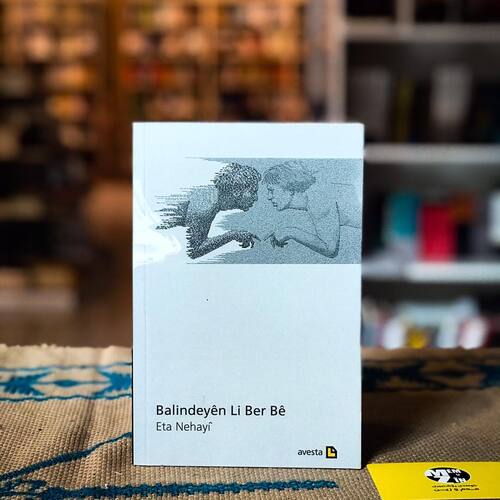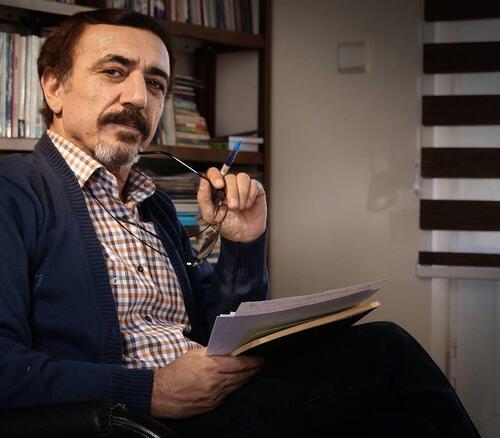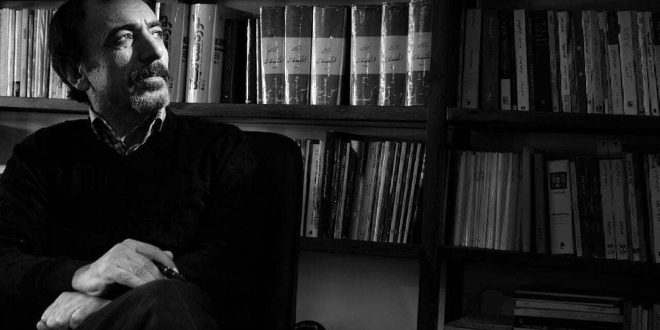Avin Tayfour
The world of reading is such a place where reading every new book gives us a new kind of experience and a new enjoyment. Reading books and novels enhances the readers' spirit as if a snake has bitten the readers' neck without letting them go until it releases all the venom into the readers' veins. However, after this biting and release of venom, the reader will not die but rather like a newborn continue their lives throughout the novel.
Atta Nahyi takes the readers of "The Birds Confronting the Wind" on a journey and makes them melt over the words from time to time and they get lost among those words.
The novel's formation
The title of the novel is "The Birds Confronting the Wind". Bassam Mustafa has translated this novel from the Sorani dialect of Kurdish to Kurmanji, another Kurdish dialect. This book has been published by the Kurdish Cultural Institute publication in Tehran.
The Characters of this novel
These are the characters of this novel: imaginary "I", Mihraban (Kindness), Afsana (Myth), Farhad, Kale, Layla, Naseri, Jalali and Mirza Saeed, Monira, Nashmil, Rounak, Baram, Pire, and Kourash.

Time and Place
This novel's setting is the East part of Kurdistan and the time of the novel is 1979.
The Novel's Descriptions
"The Birds Confronting the Wind", is the second novel written by "Atta Nahayi" in 2002 and it was published in 2003. A naked woman is illustrated in a part of this novel who turns into a fireball and is thrown into the alley. In other parts of this novel with all its literary and aesthetic features, Nahayi talks about the political situation and the oppression that is carried out against women. The heroine of this novel, Mehraban, has returned from Europe. She had changed in Europe completely. She wants to write a story, Farhad and Kale's story. She meets her friends and fans in Mirza Saeed, her father's home. Mirza Saee had died after Mehraban had migrated to Europe and the other siblings of hers had moved on with their lives. Rounak, Monira and Baram. They both reveal themselves and the imaginary "I" asks Mehraban to write the story. However, Mehraban says she has come back for another story; she had to write the story of Farhad. Mehraban spends most of her time with her friend Jalali. Farhad knows about Afsana's story. In a story that is written by the imaginary "I", Mehraban dies, and in the story that Mehraban writes, Farhad dies. The fate of Afsana and Kale and their catastrophic bitterness is illustrated in "The Birds Confronting the Wind" or "The Forgotten Generation" which show their sad situation and the fate that most women face in their lives.

In this novel, the heroes die in both of the narrations. The only one who stays alive is the imaginary "I" that is obviously Atta Nahayi himself. In other words, one can say that the other characters are all imaginary "I" creations who want to write the forgotten fate of a generation before they get old and forget it all by writing about Mehraban and Farhad.
"Nahayi" has applied a more complex technique in his narration which makes the reader finish the novel effortfully. The reader may be lost in the very first chapters of the novel and may put it aside completely. However, if they read the novel to the end, they will see a post-modern novel.
This novel's characters are Kurdish people who live in a civil war and special political situation. The author has emphasized Leyla's handkerchief without which she cannot leave the house. The main character of this novel, Mehraban, is looking for Afsana and is actually looking for two blind young people who have tied her hands; she confronts a woman's statue with this phrase written below it: "Goodness is a woman's beauty". According to Mehraban who had mentioned it in the novel, there were some other phrases on this statue, too but she did not pay attention to them or perhaps the author has tried to make her see only this situation that women are living in. Nahayi has not underestimated women in this novel but he has illustrated their heroic characters. He has tried to narrate a story within another story. Nahayi's method is of a kind that narrates a novel within another novel.









